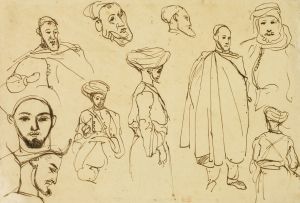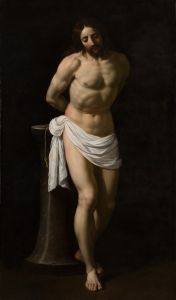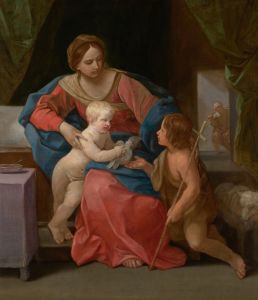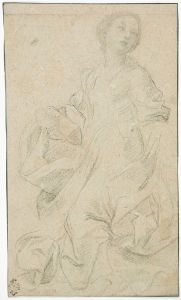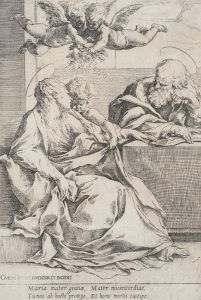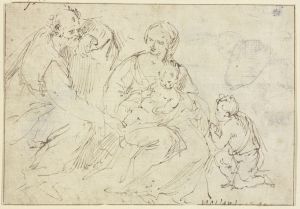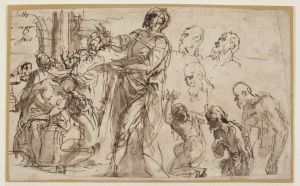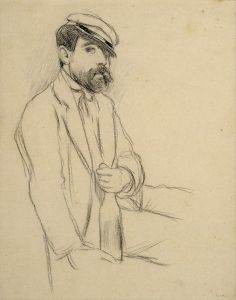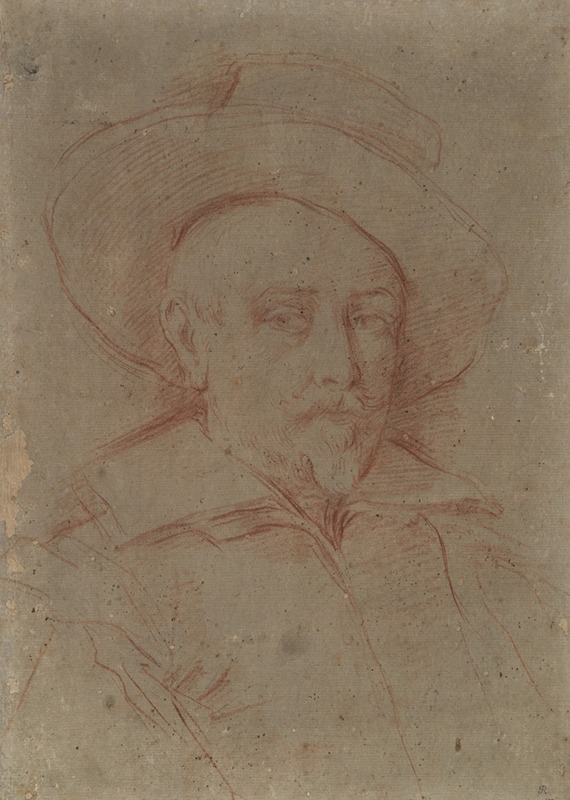
Study for self-portrait in the Uffizi Gallery, Florence
A hand-painted replica of Guido Reni’s masterpiece Study for self-portrait in the Uffizi Gallery, Florence, meticulously crafted by professional artists to capture the true essence of the original. Each piece is created with museum-quality canvas and rare mineral pigments, carefully painted by experienced artists with delicate brushstrokes and rich, layered colors to perfectly recreate the texture of the original artwork. Unlike machine-printed reproductions, this hand-painted version brings the painting to life, infused with the artist’s emotions and skill in every stroke. Whether for personal collection or home decoration, it instantly elevates the artistic atmosphere of any space.
Guido Reni, an eminent Italian painter of the Baroque period, is renowned for his masterful use of color and graceful compositions. One of his notable works is the "Study for Self-Portrait," housed in the Uffizi Gallery in Florence. This piece is a testament to Reni's skill in capturing the subtleties of human expression and his adeptness in self-representation, a common practice among artists seeking to explore their own identity and legacy.
Born in Bologna in 1575, Reni was a prominent figure in the art world during his lifetime. He trained under the Bolognese painter Denis Calvaert and later joined the Carracci Academy, which was pivotal in shaping his artistic style. Reni's work is characterized by its classical beauty, harmonious compositions, and a delicate interplay of light and shadow, which are evident in his self-portraits.
The "Study for Self-Portrait" in the Uffizi Gallery is a preparatory work, which suggests that it was created as a preliminary sketch or exploration for a more finished piece. This study allows viewers to gain insight into Reni's creative process, showcasing his ability to convey depth and emotion with seemingly simple strokes. The Uffizi Gallery, known for its extensive collection of Renaissance and Baroque art, provides an appropriate setting for this work, allowing it to be appreciated alongside other masterpieces of the period.
Reni's self-portraits are significant not only for their artistic merit but also for what they reveal about the artist himself. Through these works, Reni presents himself with a sense of introspection and dignity, often depicted with a calm and contemplative expression. This introspective quality is a hallmark of Reni's portraits, reflecting his interest in the psychological depth of his subjects.
The "Study for Self-Portrait" exemplifies Reni's meticulous attention to detail and his pursuit of capturing the essence of his own likeness. The work is executed with a refined technique that highlights Reni's command of the medium, whether it be oil, chalk, or another material. The study's unfinished nature invites viewers to imagine the artist at work, contemplating his own image and the legacy he wished to leave behind.
Reni's influence extended beyond his lifetime, impacting subsequent generations of artists. His works were highly sought after by patrons across Europe, and his style was emulated by many. The "Study for Self-Portrait" remains an important piece within the Uffizi's collection, offering a glimpse into the mind of one of the Baroque period's most celebrated painters.
In summary, Guido Reni's "Study for Self-Portrait" in the Uffizi Gallery is a valuable work that highlights the artist's technical prowess and introspective nature. It serves as a window into Reni's artistic process and his enduring legacy in the world of art.






